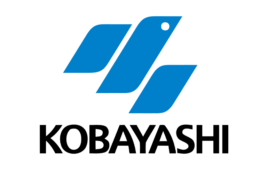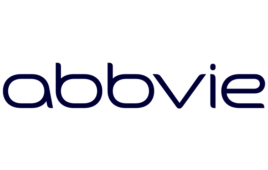By Brandon Battersby
Assistant Editor
As the general public becomes better educated about healthcare and pharmaceuticals and more aware of their options, there is an increasing demand for pharmaceutical companies to explore new ways of reaching their audiences by advertising through various forms of media. Television still remains the dominant outlet for drug advertisements-filled with gimmicky cartoon characters like the raspy spoken Mucinex loogie (or whatever he is) and his mucus family-however, the internet is quickly becoming the most popular frontier for target advertising, and social utilities and networking sites such as Facebook are becoming popular playing fields for pharmaceutical advertisers. Being a Facebook aficionado and habitual web surfer myself, I can say that my experiences with online advertising can provide useful insight to any company interested in marketing on the web.
The internet has certainly initiated a shift in health care formalities. Prior to the internet, patients relied on the professional diagnosis and recommendations of their physicians who would prescribe them a medication that the patient most likely knew nothing about. Now, due to the abundance of information online (whether it be through a credible health blog, Wikipedia, or even Yahoo Answers), people are acquiring the information they need to self-diagnose themselves before they even step into the doctor’s office. Then they request a prescription for specific drugs that had been previously recommended to them or that appealed to them in an advertisement. Therefore, there has been an apparent impact on the industry as a result of advertising, but what are some ways of successfully promoting drug products online?
The internet poses a few key advantages over advertising through television or print. Firstly, there is a world of opportunities to making advertisements engaging and creative by using interactive websites or flash ads. You would be surprised at the variety of products I have seen advertised in mini flash games. Just a few weeks ago I spent the better part of an hour boxing overpriced gas pumps in the ring as a fuel efficient Nissan Versa. I didn’t take away much except that I should always avoid gas pumps with four arms because they have a vicious right hook. Still the advertisement held my attention for a duration that well exceeded 30 seconds; the sound effects attracted my curious father into the room who now knows the Versa is pretty fuel efficient; and most importantly it stuck in the head of a college kid to whom videogames are the culmination of human development. Find a medium that the target audience will want to engage with; flash video games generally get a response out of young adults.
Secondly, the FDA still hasn’t worked up a sufficient framework for regulating online advertising. Although most companies still maintain their integrity-listing side- effects and drug warnings related to their product-they still have ridiculous campaign methods. The Mucinex website, to note, actually allows users to meet an animated representation of Mr. Mucus (the loogie dude previously mentioned) who plays off the gimmick of being tossed out of every new home he and his family move into. But there is another side to this unregulated coin. While FDA approved products are enjoying the liberties of online advertising, so are their “unofficial” competitors who are not accredited by any significant regulatory body. Less reliable products such as herbal remedies that rarely work, “natural” supplements like fish oils that aren’t coated properly and dissipate in the stomach with no health benefits and even teas with hallucinogenic properties equivalent to the drug Tetrahydrocannabinol found in cannabis are not only advertised on the web, but easily accessible. Not only do companies need to jockey for space on line, they need to outshine the appeal of accessibility (if they are selling prescription products) and somehow stand out as being more effective and reliable than the “miracle” drugs being pushed by false advertisement.
Thirdly, the target audience is identifiable. The promotion can and should target those who would be interested in reading it. Advertising on web pages or blogs that discuss and educate about a disease or illness that the drug addresses is an obvious way to reach target audiences. Unfortunately, in this regard, search engine optimization (SEO) is going to be a great hurdle considering firms designate full departments to this endeavor. Their goal of course is to get a blog or ad to show up after person so-and-so discovers that he or she has illness x, when he or she is looking for remedies y. Your product ad is y and the easiest way to make sure that all roads lead to y is to control x. Creating a resource page for people with diabetes makes a great platform for advertising an insulin product. Facebook, for example, takes keywords out of a user interests page to determine what ads to display on the margins of the screen. Keywords that I used such as band names, fitness, and health resulted in my page being flooded with ads for Incubus tickets, protein supplements, dieting, exercise routines, male performance enhancers, protein supplements, and did I mention protein supplements. The problem for pharmaceutical companies with social networking sites like Facebook is that no one lists arthritis, erectile dysfunction, or hemorrhoids under their interests page even if they have it. So ads for appropriate treatment and therapies aren’t going to pop up people’s profile page; any drugs advertised are usually for aesthetic purposes, sometimes making my Facebook page feel like opening up a copy of Men’s Health. Still, there are plenty of approaches to take, such as developing an application for Facebook users or a group page for people with the same condition.
With millions of eyes scanning the web every second, the audience for online advertising seems limitless. Many methods are hit and miss; website banners and margin ads rarely attract the eye. There are many tools such as WordPress and social utilities that will enable companies to design online communities or hubs to draw people looking for information and suggestions. By providing these resources, not only do you create a net to ensnare your audience, you create a platform for advertising. With a little creativity your ad will stick; and with some success in SEO, your ads can be virtually unavoidable and as unforgettable as the raspy charm of the Mucinex loogie.




